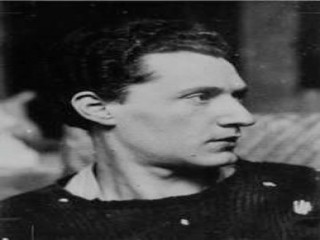
Elie Nadelman biography
Date of birth : 1882-02-10
Date of death : 1946-12-28
Birthplace : Warsaw, Poland
Nationality : Polish-American
Category : Famous Figures
Last modified : 2011-03-20
Credited as : Artist sculptor, graphic artist,
Elie Nadelman, the Polish-American sculptor and graphic artist, evolved a highly distinctive sculptural style by abstracting human forms and stressing the curvilinear interplay of contours.
Elie Nadelman, born in Warsaw, was the seventh child of cultivated parents who encouraged their children to take an interest in the arts and philosophy. His studies at the Art Academy in Warsaw were interrupted by a year of military service. He returned to Warsaw in 1901 and then went to Cracow, but he realised that art in his native land was provincial and that he must leave to learn.
The following year Nadelman went to Munich, where he saw the drawings of the English Art Nouveau illustrator Aubrey Beardsley. These highly stylized works undoubtedly influenced Nadelman. He responded to Beardsley's elegant patterning and curvilinear invention but rejected his eroticism and fin-de-siecle posturing. Nadelman was deeply impressed by the archaic Greek sculpture in the museums; it was the first original ancient classical art he had seen, and its impact was lasting. He also took delight in German folk sculpture and Meissen figurines. It was as if these early influences merged in forming a style for Nadelman that was classical in spirit but not heroic, playful but never trivial.
After spending 6 months in Munich, Nadelman went to Paris. His first sculptures suggest those of Auguste Rodin, but by 1905 he had steered away from the French master's impressionistic concepts and toward forms defined by sweeping contours that assumed a detached, coolly geometric aspect. Nadelman began his research by making many drawings. In them, and later in his sculptures, he attempted to reduce the human figure to a complex of arcs. The titles he gave all his sculptures executed between 1905 and 1915 best characterize the spirit and nature of the work: Research in Volume and Accord of Forms.
Nadelman's one-man show of 1909 in Paris was a great success, critically and financially, although the swaggering, svelte nudes and neoclassicistic marble heads, which seemed so novel then, appeared mannered and dated later. In 1910 Nadelman wrote that true form is abstract, that is, composed of geometrical elements. "Here is how I realize it," he volunteered. "I employ no other line than the curve, which possesses freshness and force. I compose these curves so as to bring them in accord or opposition to one another. In that way I obtain the life of form, i.e. harmony."
In 1911 Nadelman had a one-man show in London. Helena Rubinstein, the cosmetician, bought everything in it. Reportedly at her invitation, Nadelman went to America in 1914. The following year he had a one-man show at Alfred Stieglitz's "291" gallery. Man in the Open Air, shown at this time, is, like most of the work that followed, severely stylized, with the elegance of a superior store mannikin.
Nadelman made spirited animal pieces and employed color in his figures in wood, terra-cotta, and papiermache. He did a series of plaster figures during the 1930s and 1940s in the manner of Tanagra figures. Two sets of his papiermache figures were enlarged and placed in the New York State Theater at Lincoln Center, New York City.
Lincoln Kirstein, The Sculpture of Elie Nadelman (1948), is the catalog of his 1948 exhibition at the Museum of Modern Art. It is scholarly and well illustrated, but it tends to be effusive.
















